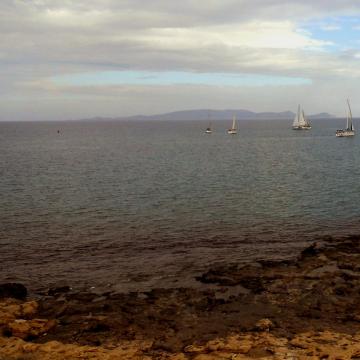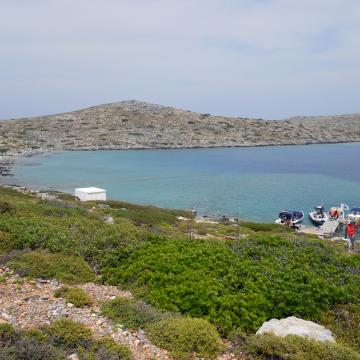GR4310003 - NISOS DIA
Map
Quality
The island seems to be a very important biotope for endemic plants and for plants with low dispersal of the Southern Aegean. Two strictly endemic species of the island have been identified until now; however, there are strong suggestions for the presence of more. Also important are the species Allium tardans (endemic of Crete and Carpathos) and Asperula tournefortii. The rabbit population belongs to the endemic subspecies Oryctolagus cuniculus cnossicus, whilst there is also an endemic population of the lizard Podarcis erhardii schieberi. This is an important site for breeding seabirds and species associated with coastal cliffs. Species of concern include: Falco eleonorae. Monkseals are laso often seen by local fishermen around the island.NOTES: Capra aegagrus is introduced to the site, thus it is not included in section 3.2.c. (Annex II species), but in section 3.3. (other important species).OTHER IMPORTANT SPECIES WITH MOTIVATION DAsperula tournefortii, Muscari dionysiacum are protected by the Greek Law (Presidential Decree 67/81) and are included in the IUCN Red Data List (1993) in the category of threatened plants characterized as "rare".Cynara cornigera is a species with distribution in S. Greece, the Aegean and Cyprus. Helichrysum orientale is a species found only in W Turkey out of Greece.
Other characteristics
The island of Dia is located 14 km north of Irakleion Bay (Kriti), with 5 km maximum length and 3 km maximum width. It is uniformly covered by low sclerophyllous vegetation with Sarcopoterium spinosum (dominant species) and Pistacia lentiscus, in the form of small shrubs (mostly at the western parts). The island exhibits a high degree of vegetational degradation, having been overgrazed during the last decades, initially by domestic goats and, after 1955, by the introduction of the Cretan "agrimi" (Capra aegagrus cretica), which overpopulated the island. During the last years, an effort is being made by the Department of Forestry to remove all goats (wild or hybrid ones) and to reintroduce -after vegetation has recovered- the wild type of the Cretan "agrimi".
Documentation
1) Ministry of Environment Physical Planning and Public Works. 1990. (Work Team: A. Legakis et al). Erevnitiko programma. Meleti ton akton tis kritis pou parousiazoun oikologikes diatarahes (Research Programme. Study of the coasts of Kriti that present ecological disturbances). Dept. of Biology. University of Crete, p. 228. (3.1., 3.2.c., 3.3., 4.1., 4.2.)
2) E.C.E. 1991. European Red List of Globally Threatened Animals and Plants. New York, p. 154. (3.3.)
3) Database CORINE-MEDSPA (3.1.,3.2.c.). 4) Heath, M. F. and Evans, M. I., eds. 2000. Important Bird Areas in Europe: Priority sites for conservation. 2: Southern Europe. Cambridge, UK: BirdLife International. BirdLife Conservation
Series No. 8, p. 791.
5) Georghiou K. 1995. Checklist of Endemic, Rare and Threatened Plants of Greece. Draft. University of Athens. (3.3, 3.4, 4.2)
Reference: Natura 2000 data form, database release 7 Feb 2014




